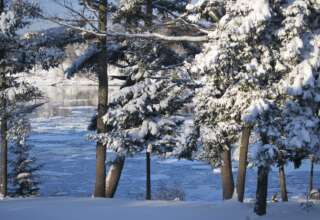
I once visited my friend, Bear, a Canadian and member of the Micmac nation, on his reservation in Nova Scotia. Bear’s daily life was community-oriented, not individualistic in any way. His home had a constant open door policy. People on the reservation were constantly dropping by to say hello, to get a ride to the medical clinic, or have a meal. Bear always had a pot of moose and vegetable stew on the stove and freshly picked blueberries to share. He was one of the wealthier members of the tribe; he had a car, a nice home and plenty of food. He didn’t seem to regard what he had as his possessions; rather his wealth belonged to everyone and was to be shared. There was a warm sense of community and everyone was welcome, even if people were addicted or mentally ill. I met many Micmac people and most wanted me to hear their stories and to learn about me as well. I was invited into people’s homes, taught to make moccasins and drums and was even invited to a spiritual sweat lodge ceremony with the chief. Bear is male, but he certainly has an inclusive, care-based morality, not a separatist, justice-based morality. Although no one in Nova Scotia had met me before, I was included in the community and felt at home.
This loving experience was not what happened to Bear when he was mandated by the Canadian and United States government in the 1960’s to assimilate into Western society by being forced to attend an Indian Residential School in the Northeast, where he was separated from his family for years, not allowed to speak his native Micmac and was brutally physically and sexually abused. Some of the native children were murdered and others died trying to run away and find their parents. His brothers never recovered from the experience; one became schizophrenic and the other severely alcoholic and violent. Although Bear, too, became addicted to drugs and alcohol, he was able to find sobriety and recovery and has a caring, loving heart. He still wants to give and connect with others. He doesn’t look down on people who have less nor does he resent helping them. He lives his life with the idea “we are all in this together.”
I am not idealizing life on the reservation; there are tremendous problems including poverty and pervasive addiction, to name a few. However, on the reservation I also experienced the deep community connections and a sense of responsibility the tribespeople had to one another that I do not often experience in the United States. When I returned from Canada, I had similar feelings to those I experience when returning from the third world; I feel overwhelmed by the vast wealth and material comforts available in the United States, but soon feel a simultaneous sense of despair and emptiness. I rapidly become aware of a spiritual vacuum and a lack of connection between people. I observed the road rage and noticed that people were often pushy, unhelpful and treated each other rudely. Soon, I noticed I put on a sort of emotional armor. I become more tense, angry, feel less valued and am more critical of others. I am happy to have plumbing that works, but is a toilet that flushes more valuable than a loving community? Do we have to choose? Is there a way to have both?
A group of thirteen middle and upper-middle class women in Southern California shared their experiences in the book, “The Necklace” (Jarvis, 2008) of how they transformed their lives by together buying a $15,000 diamond necklace and sharing it. One woman saw the necklace in a store and desired it, but knew that for her, spending $15,000 on a piece of jewelry was out of the question. She thought, “what if I pool my money with some others and we share it?”. Her idea was that each woman would wear the necklace for a month and when that month was up, would pass it along to the next woman. She found twelve other women who wanted to go in with her on the purchase. At first, the shared feeling for the co-owners was desire for the necklace, but then that ownership raised other provocative questions in the group. Why are personal luxuries so plentiful for some yet inaccessible to others?






